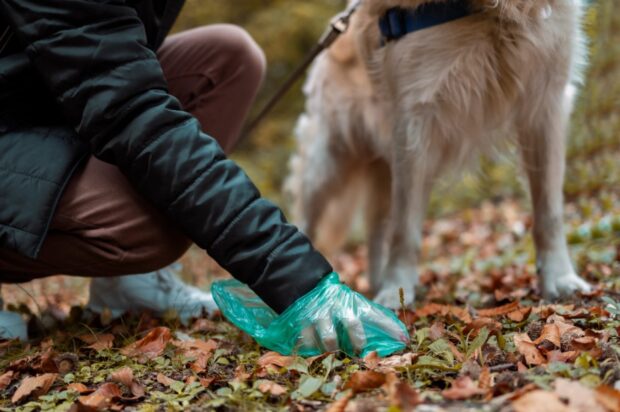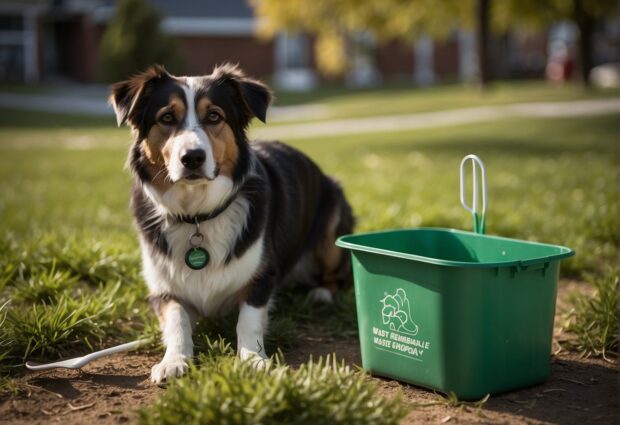The discussion surrounding climate change has evolved from a specialized subject to one of worldwide significance. Numerous individuals are actively altering their lifestyles, such as recycling and using electric vehicles, to decrease their carbon footprints. However, one often overlooked issue is the impact of pet waste on carbon emissions.
In the United States, there are nearly 163 million pet dogs and cats. Collectively, they generate over 5 million tons of waste yearly. Improper disposal of significant waste increases methane emissions, a greenhouse gas far more harmful than carbon dioxide.
Many pet owners are unaware that the consequences of this waste go beyond just soiling public walkways. It plays a major role in exacerbating climate change. In this blog post, we will examine how pet waste disposal affects carbon emissions. It will also highlight what responsible pet owners can do to minimize environmental harm.
Understanding the Carbon Impact of Pet Waste

Animal excrement, especially from dogs, contains various harmful pathogens and bacteria that can negatively impact ecosystems. If left on the ground, animal waste decomposes and releases methane into the atmosphere. Methane is a much more powerful greenhouse gas than CO2 with at least 28 times greater capacity to trap heat.
According to the EPA, when not properly treated, it undergoes anaerobic decomposition. In landfills, where oxygen is scarce, the waste continues to produce methane, worsening the problem.
One study explored the microbial risks associated with livestock excrement. It highlights that these wastes carry pathogenic microorganisms harmful to both human health and environmental safety. The microbiome of livestock excrement affects the environment by transferring antibiotic-resistant and zoonotic microorganisms through their management and utilization processes.
Additionally, research on dog excrement has revealed its underestimated contribution to nutrient pollution in nature reserves. High concentrations of nitrogen and phosphorus from dog feces and urine can lead to eutrophication. Hence, the study suggests that the management of dog waste in such areas is crucial. It may include the enforcement of leash laws and the promotion of responsible disposal to minimize environmental damage.
The Environmental Problem with Traditional Disposal Methods

Most pet owners simply dispose of their dog’s waste in plastic bags, which then get tossed into regular trash bins. The problem with this method is twofold.
First, traditional plastic bags are not biodegradable and can take hundreds of years to decompose, clogging up landfills. Second, while it may seem harmless, emits methane as it breaks down anaerobically in landfills, as discussed earlier.
The environmental cost becomes even steeper as plastic bags are made from petroleum products. Their disposal and production add to CO2 emissions. Using non-biodegradable bags for pet waste adds another layer of complexity to the already existing issue of plastic pollution.
Pet Waste Removal Services Are a Green Convenience
One of the best ways to manage pet waste while contributing to environmental sustainability is through a professional pet waste service. Many such companies now offer eco-friendly disposal solutions that prevent methane emissions.
They ensure that the waste is disposed of responsibly. These services typically use compostable bags and dispose of the waste in facilities where methane emissions are minimized.
Moreover, opting for removal services reduces the hassle of managing pet waste on your own. This way, you can provide a greener alternative to traditional disposal methods. The trend has been growing rapidly, especially in urban areas where busy pet owners seek convenience.
Eco-Friendly Solutions

Thankfully, there are eco-friendly ways to dispose of pet waste that can significantly reduce its environmental impact. One of the most effective solutions is the use of biodegradable bags. These are made from plant-based materials, which further break down naturally in landfills.
Moreover, such bags do not contribute to plastic pollution. While they don’t eliminate methane production, they are a more sustainable alternative to traditional plastic bags.
Composting is another solution that is gaining popularity among environmentally conscious pet owners. Scoop Soldiers warn that pet waste is teeming with harmful pathogens. It is important that your composting method destroys these pathogens or they would contaminate the soil and water around you.
Specialized composting systems break down waste aerobically (with oxygen), thereby reducing methane emissions. These systems also produce nutrient-rich compost that can be safely used in non-edible plant areas, creating a circular solution.
FAQs

1. Can biodegradable bags completely reduce methane emissions from pet waste?
Biodegradable bags can lessen plastic pollution but do not eliminate methane emissions. The primary reason is that landfills are anaerobic environments where biodegradable materials decompose without oxygen, releasing methane. Nevertheless, they offer a more sustainable option as they naturally decompose and do not contribute to the lasting environmental damage.
2. Is composting pet waste safe, and can it be utilized for all plants?
Properly done composting of pet waste using a specialized system can be safe. However, the resulting compost should not be used for edible plants due to the presence of pathogens in pet waste. It is most suitable for ornamental plants or non-edible gardens.
3. How do pet waste removal services aid in reducing environmental impact?
Pet waste removal services often employ environmentally friendly disposal methods. This includes compostable bags and specialized treatment facilities that decrease methane emissions. They ensure that waste is managed in a manner that minimizes harm to the environment. This is how they offer pet owners a convenient and sustainable option.
Pet waste may appear to be a minor problem in comparison to other environmental issues. However, its contribution to carbon emissions is surprisingly significant. Recognizing the environmental impact of conventional pet waste disposal methods can lead to impactful changes.
By implementing small adjustments like using biodegradable bags or composting, you can contribute to combating climate change. When it comes to preserving the environment for future generations, every action matters, regardless of its size.
 Jewel Beat
Jewel Beat

